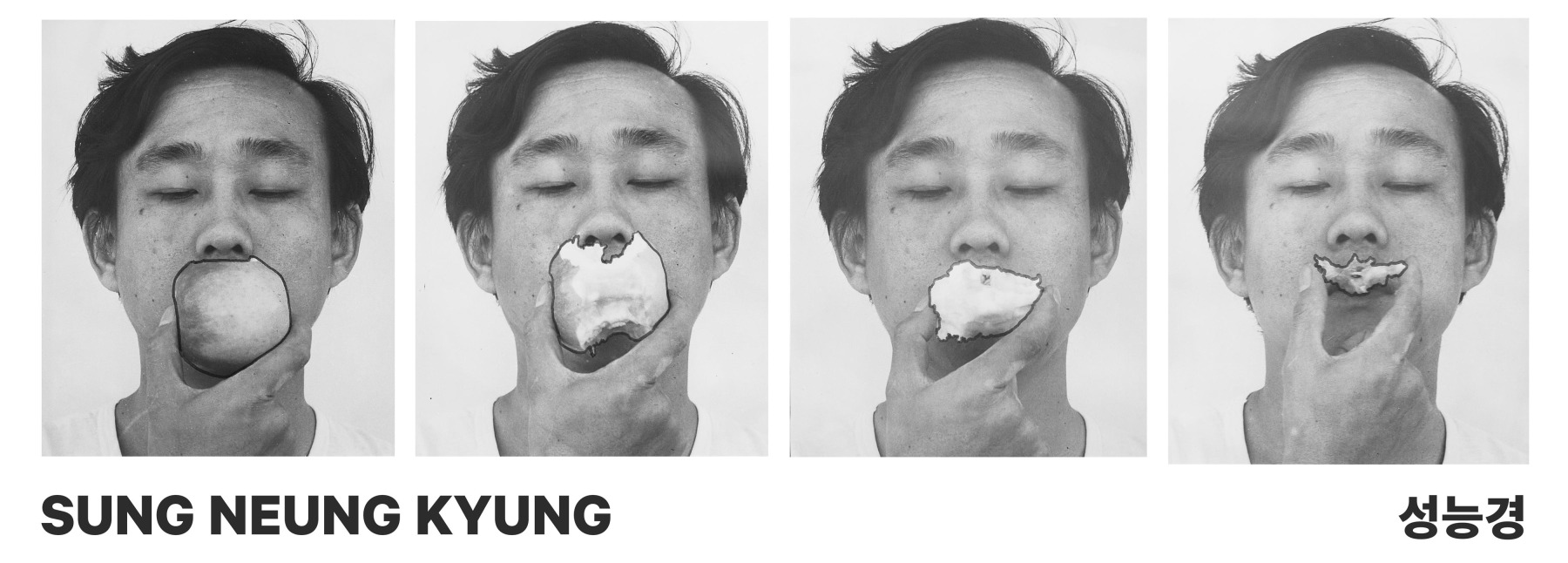
Off the beaten track: the artistic meanderings of Sung Neung Kyung is Sung Neung Kyung’s first solo exhibition outside of Korea. The exhibition is a retrospective of the artist’s decades-long artistic career, featuring works from the 1970s to the present.
Recognized as a pioneering figure in South Korean avant-garde art, Sung is known for his exploration of unconventional mediums including performance, photography, and archival methods to examine the construction of knowledge and power, often in response to sociopolitical friction.
Request more information about Sung Neung Kyung
1940s–1950s
Born in Yesan, South Korea in 1944, Sung Neung Kyung grew up amid the turmoil of war following North Korea's invasion of the south, backed by the Soviet Union, in June 1950. The conflict lasted three years, resulting in the deaths of approximately three million people and leaving tens of thousands more wounded. The artist recalls fleeing the war and hiding in the mountains with family. He stayed with his older cousin, Sung Chan Kyung, who suggested that he pursue art as a career. This cousin was an aspiring poet and a professor of English literature at a university in Seoul, who would often recite poetry by Dylan Thomas and William Blake. He profoundly influenced Sung throughout his youth and into his college years.
1960s
In 1963, Sung enrolled in the department of painting at Hongik University. During Sung’s second year at the university, he held his first exhibition, titled ㄱㅇㅅ, with classmates Kim Hwi-boo and Lee Kyung-seok. In his 1966 graduation exhibition, he presented two abstract paintings, Image 661 and Image 662. The following year, he also exhibited abstract works at the 12th Contemporary Artists Invitational Exhibition.
1970s
During this period, protests against the government were swiftly suppressed by the police, making any political statement unthinkable. In October of 1972, Park Chung-hee’s declaration of martial law banned political gatherings and censored the press. The artist notes that while many literary authors faced arrests and detentions by the regime, artists were less frequently targeted—their “indirect” mode of expression made them less likely to be arrested compared to poets and writers.
From 1970 to 1973, Sung served in the Korean military. Soon after completing his term, Sung started off his artistic career by joining the art collective Space & Time (ST) which was a loosely-formed group based on interpersonal connections, united by a shared passion for art. ST primarily comprised artists who had graduated from Seoul National University or Hongik University. In addition to creating their own work, the members collectively read essays and manifestos, including Joseph Kosuth's 1969 essay Art after Philosophy.
In keeping with the prevailing trends in the avant-garde scene, Sung created the three-dimensional piece Circumstances, which featured a stainless steel sheet and two white rocks, for the second ST group exhibition in 1973. Upon displaying his piece, he felt that it was an imitation of trends, and this prompted him to seek his own voice, which he ultimately found in conceptualism, aiming to transcend materiality in art.

Sung’s first performance, Newspapers, After the 1st of June 1974, involved cutting articles from daily newspapers for two months prior to the 3rd S.T. Exhibition at the National Museum of Contemporary Art in Seoul, where he displayed the altered newspapers on the walls. During the week-long exhibition, he performed these acts of cutting and posting newspapers to comment on government censorship. The critic Bang Geun-taek wrote a brief review of Sung’s work in Space Magazine, the only art magazine at the time. He questioned why his piece criticized the fabricated nature of journalism while leaving advertisements untouched, asking why the artist hadn’t removed them as he had with the texts.
After asking his father to buy him a secondhand Nikon F2 manufactured in Japan in 1974, Sung began photographing his peers’ work. In order to learn how to take pictures, he studied photography technique using Sa-jin-gi-sul PHOTO, a book recently published by the Korean photographer Yu Man-yeong.
In Here (1975), Sung depicts himself in front of a mirror placed at a three-way intersection in an alleyway outside his home in Seoul, rotated to show 18 different backgrounds. This work marks the start of Sung’s ‘performed photography,’ in which the artist’s enactment of a certain process becomes the subject of the work, including Smoking (1976), Index Finger (1976), and Location (1976).
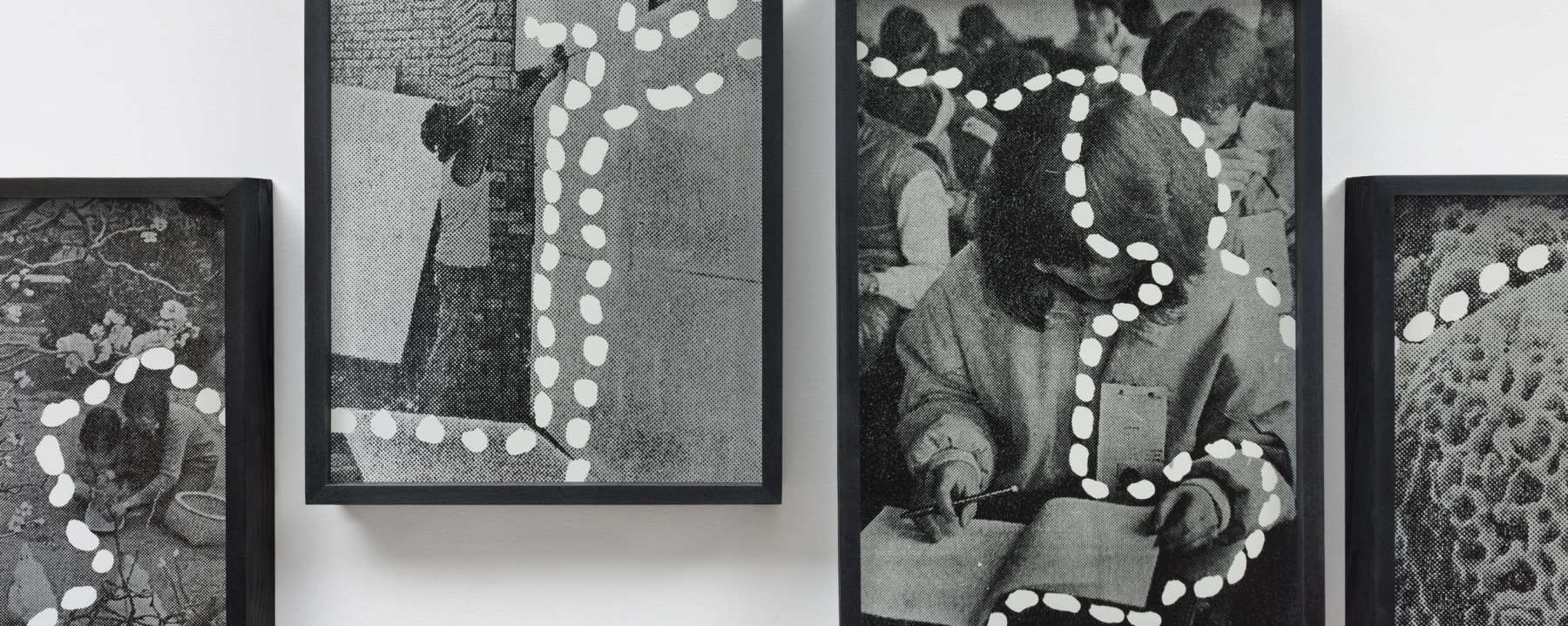
Building on Mr. Bang’s critique, Sung conceived the idea of using a physical copy of the magazine Space to connect his art with himself. In Location (1976), the artist holds the magazine in various positions—either in his right hand or held precariously in-between his toes—emphasizing how the artist’s posture changes in relation to the way the magazine is held.
After marrying an elementary school teacher in 1979, Sung started a family and became the main caretaker of four children. During their formative years, he captured candid snapshots to document their growth, many of which were out of focus or improperly exposed, which later developed into ‘botched’ photography works.
In 1979, Sung began the series Venue, which combined newspapers, photographs, and drawing. This series continued until Venue 35 in 1989. The first piece, Venue 1, sourced news photographs marked with arrows, dotted lines, and solid lines. After taking photographs, the artist drew similar markings in different directions on the film, aiming to nullify the message of the photographs and dismantle the media's editorial power. The Venue series also includes images of pro-democracy protests and police suppression during the early 1980s democratic movement. Art historian Su-jin Cho noted that Venue 29a (1987) and Venue 29b (1987), which feature these images, were exhibited at the Minjung Art - New Movement of Political Art from Korea Held (1987) in Artist Space in New York, NY, and were interpreted by Lucy Lippard as works reflecting the political situation in Korea at that time.
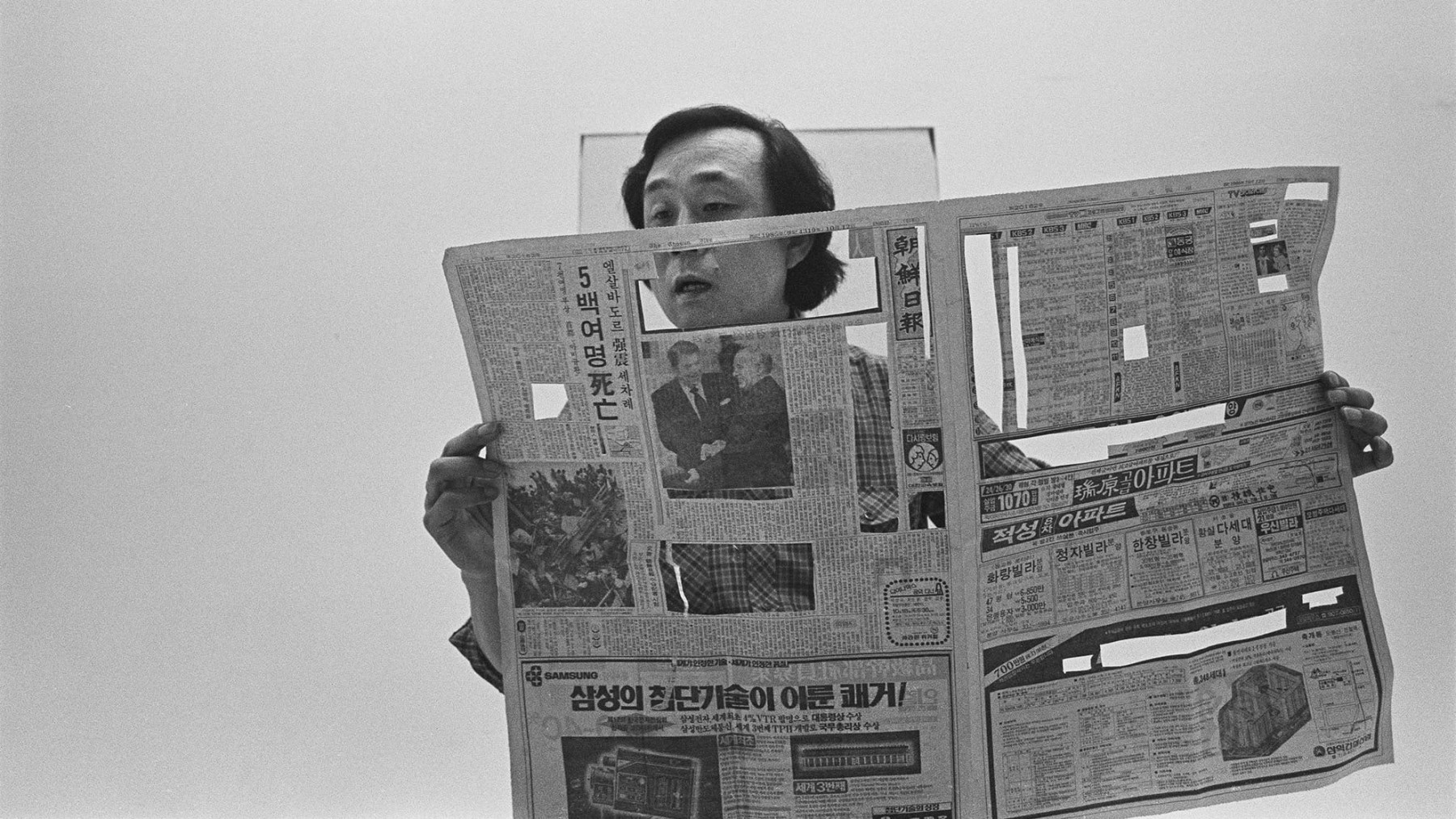
The 1980s
After the assassination of Park Chung Hee in October 1979, the Korean government fell under the control of Chun Doo Hwan, who mirrored Park's authoritarian rule. The Gwangju Uprising, a student-led demonstration in May 1980 in South Korea, was sparked by Chun Doo Hwan's military coup and the imposition of martial law. Toward the later part of the 80s, the June Democratic Struggle—also referred to as the June Democracy Movement and the June Uprising—rose to prominence as a nationwide pro-democracy movement in South Korea that sparked widespread protests from June 10 to 29, 1987. These demonstrations compelled the ruling government to conduct direct presidential elections and implement other democratic reforms.
In 1985, Sung held his first solo exhibition, Sung Neung Kyung, featuring works from the Venue series— specifically, Venue 8 to Venue 24 (1985). The exhibition showcased around 800 photographs of contemporary South Korean "venues" drawn from his collection of about 1,500 press photographs. These images addressed a wide range of social, political, economic, and cultural issues, including scenes ranging from kim-jang (kimchi preparation) to actual crime scenes. For instance, photographs displayed in Venue 2 highlighted taxis, chosen in light of a controversial government taxi meter replacement policy. While press photographs are typically selected for their political implications, Sung appropriated these images, recontextualizing them within the realm of documentary fine art photography.
Request more information about Sung Neung Kyung
The 1990s
In another solo exhibition staged in 1991, titled S's Posterity: Botched Art Is More Beautiful at Gallery Samduck, Daegu, South Korea, Sung exhibited the “botched” photographs he had taken during his childrens’ adolescence. This marked the beginning of his exploration of "botched art," which has become a defining aspect of his practice.
Sung's personal history photography installations emerged during a period in the South Korean art scene marked by postmodern trends that deconstructed genres. His work challenged the metanarrative of modernist art by focusing on the micro-narrative of private life, reflecting a shift from historic events to individual experiences. Globally, photographs of everyday life had become increasingly prominent in art since the 1960s, with South Korea experiencing this trend in the late 1990s. Sung's art has always been autobiographical, shaped by his personal perspective and subjective judgments. At the same time, Sung’s work reflects the lives and conditions of middle-class citizens rather than solely his own experiences. Despite being rooted in his unique viewpoint, he sought to create universal art for the masses.
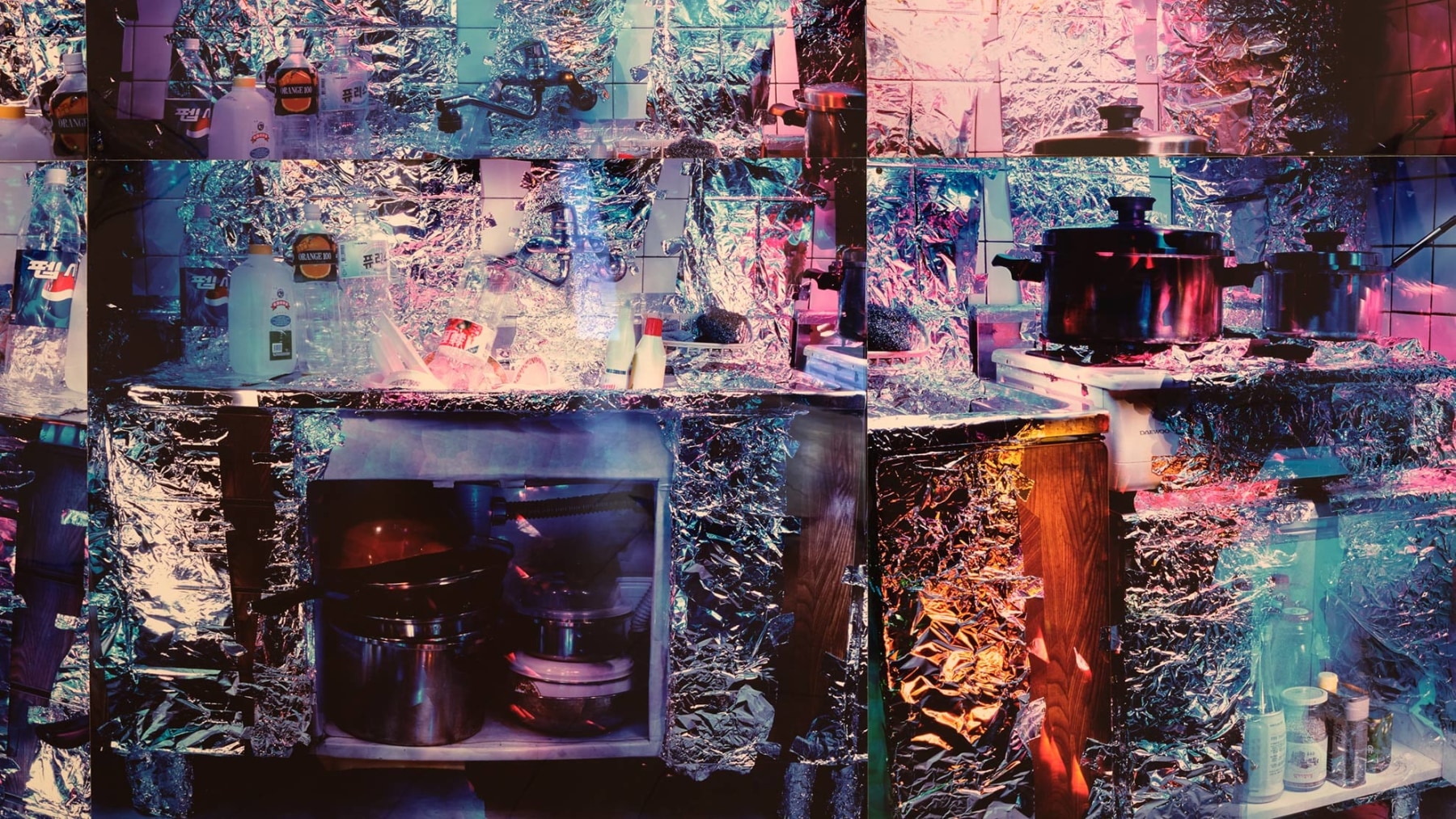
The 2000s
Sung consistently uses his body as material—a conduit for recording the lives of ordinary Koreans and reflecting everyday realities. A prime example is Everyday English (2003–2018), a daily mark-making performance he conducted for fifteen years, using newspapers delivered to his door. This work combines English study and drawing. Sung's personal installations rooted in his personal history encourage viewers to reflect on their own memories, as particularly evident in the Private Room (2001), of the Art is the Shadow of Delirium: Kitchen series, and in Mt. Baekdu (2019).
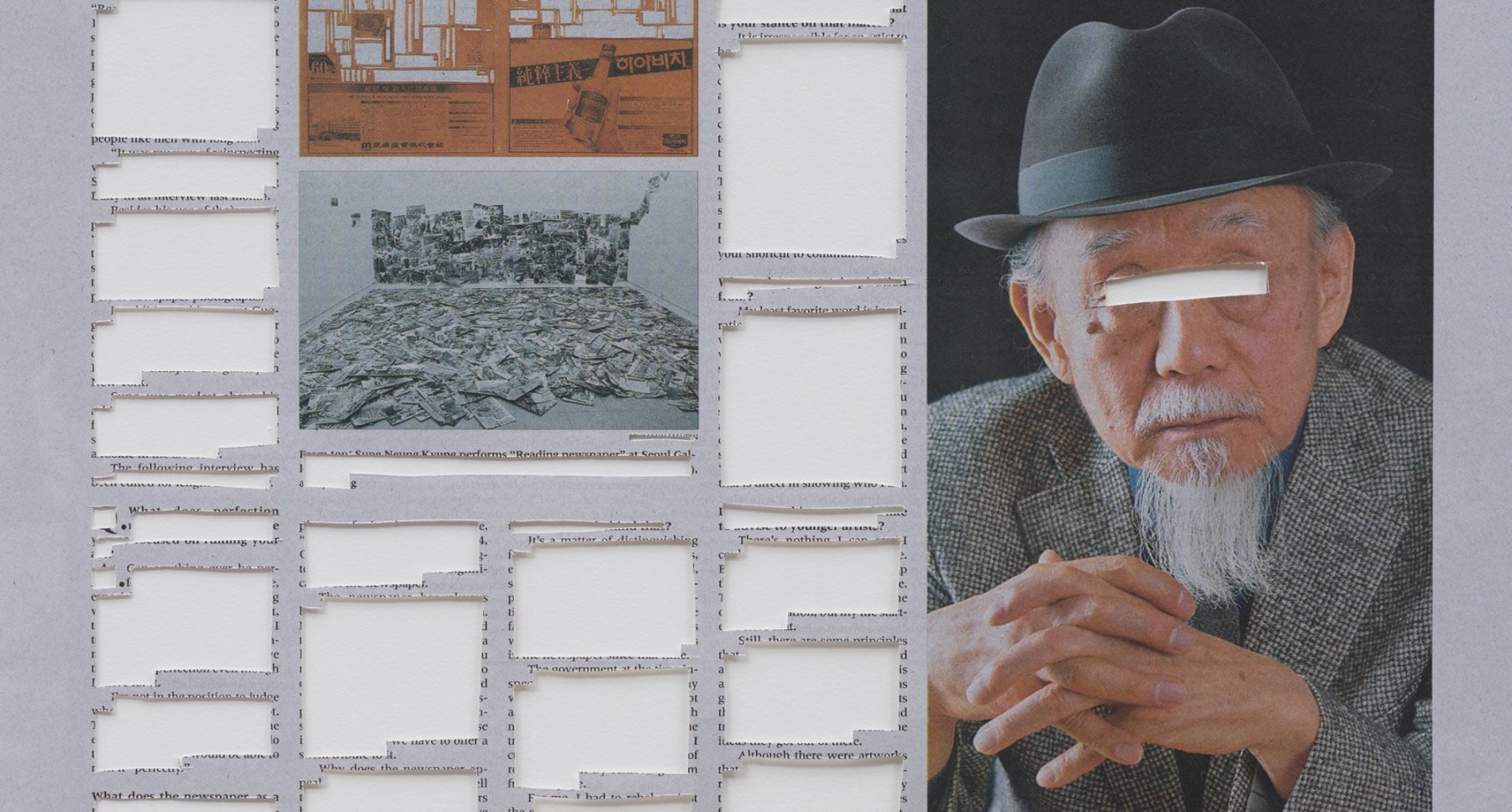
The 2020s
In the early 2020s, Sung started to show more at both institutional and commercial spaces. At New York’s Guggenheim Musuem, Only the Young: Experimental Art in Korea, 1960s–1970s (September 1, 2023–January 7, 2024) examined the work of a group of artists who came of age in the wake of the Korean War. It is the first North American museum show dedicated to ‘Korean Experimental art’. This exhibition later traveled to the Hammer Museum in Los Angeles. In 2023, during the run of this exhibition, he staged an iteration of Reading Newspapers, a participatory performance inviting 100 non-Korean individuals to bring and cut out newspapers together.
Request more information about Sung Neung Kyung